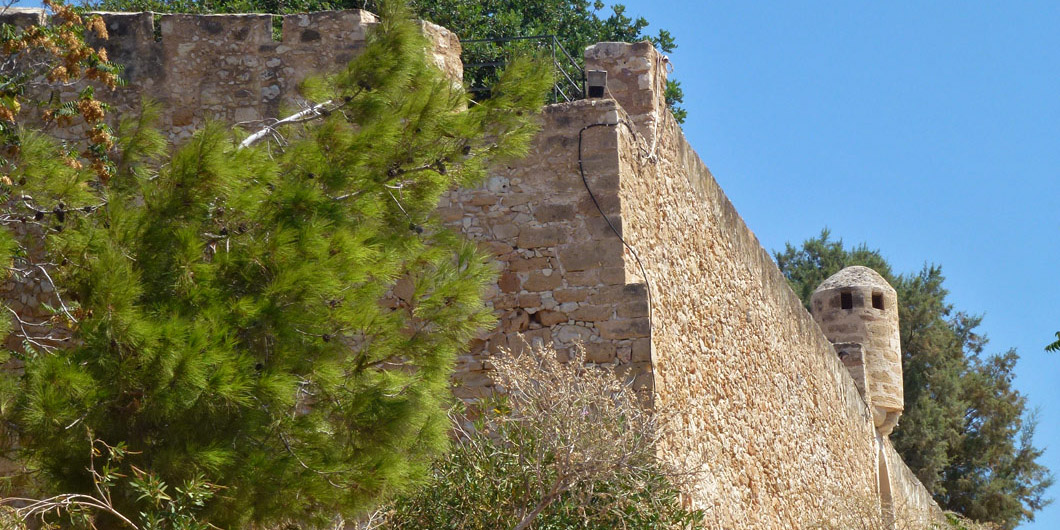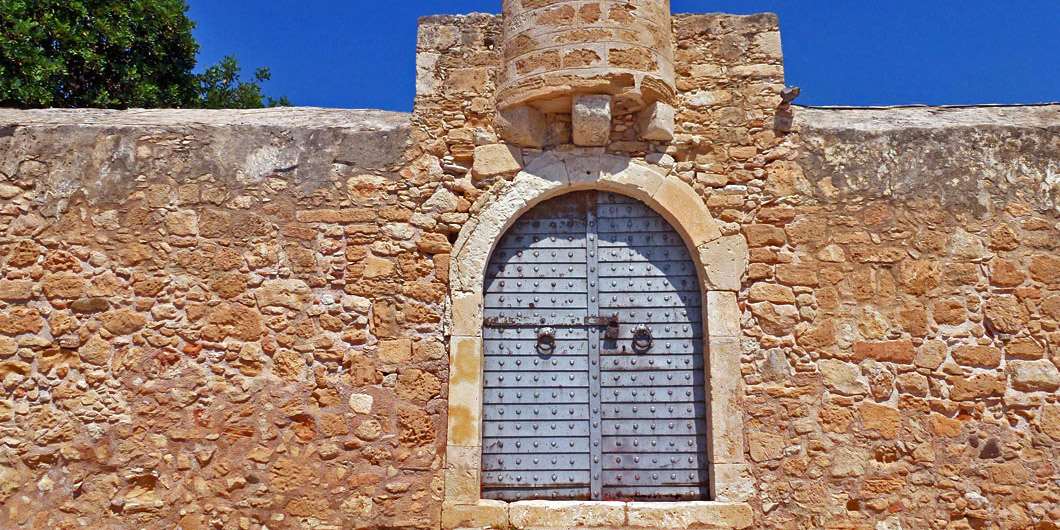The name Kazarma is derived from the Venetian Casa di Arma, which means barracksor armoury.Indeed, this was the barracks of the Venetian garrison, the army headquarters, of the fortified town of Sitia. The walls of Sitia, which reached as high uphill as the fortress, were built at the same time as the Kazarma, in the late Byzantine years.

However, several earthquakes, the revolts of the locals against the Venetians and the raids of Barbarossa caused extensive damage to the walls and the fortress itself. The walls were actually demolished at some point by the Venetians; they had intended to rebuild them, but they never did.
Fortunately, the Kazarma had a better fate; the Turks restored it and even made some additions to the construction, which are visible today. The domed lookout outposts on the battlements of the fortress are a typical example of these additions.
Two stairways lead to the main, arched entrance, from where one enters a spacious courtyard. A keep sits solid on the other side of the courtyard, across the entrance, and two uneven platforms with steps lead to its entrance. A building of three rooms is located at the east side of the keep, while on the west side one can see the remains of a smaller room which may have been a kitchen.
The Kazarma is well worth visiting, for both those who would like to visualise how the town was in the Medieval years, and those who wish to enjoy a wonderful panoramic view of the town and the bay of Sitia.
In summer, there is an additional reason why one could take the steep road up to the fortress; the Kazarma is one of the venues that host the cultural festival of Kornaria, with events such as concerts, art exhibitions, theatrical performances etc.

As a matter of fact, the Kazarma used to be the main venue that housed the festival, however nowadays it is seldom used as such, due to restrictions by the local Department of Archaeology.








